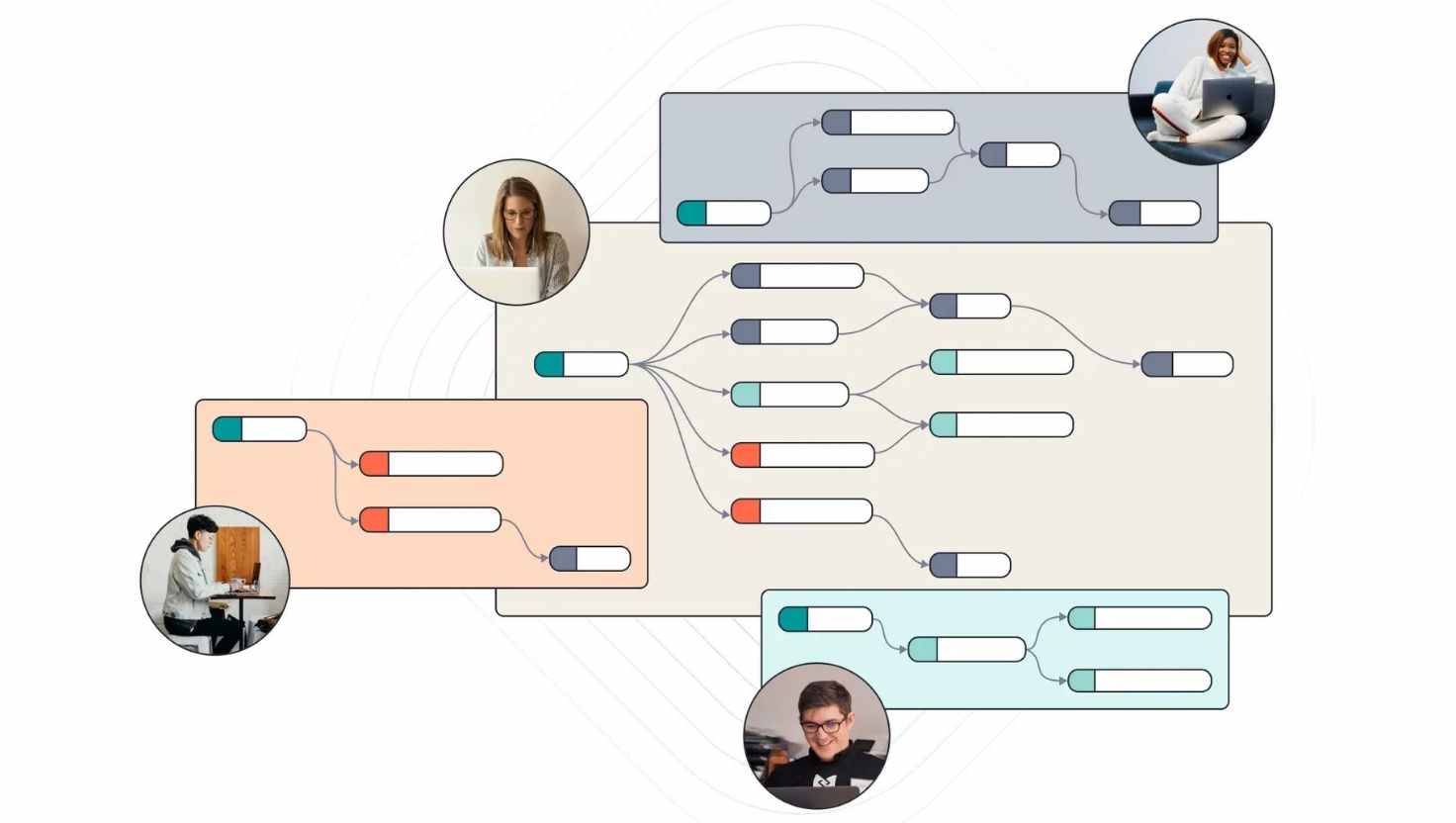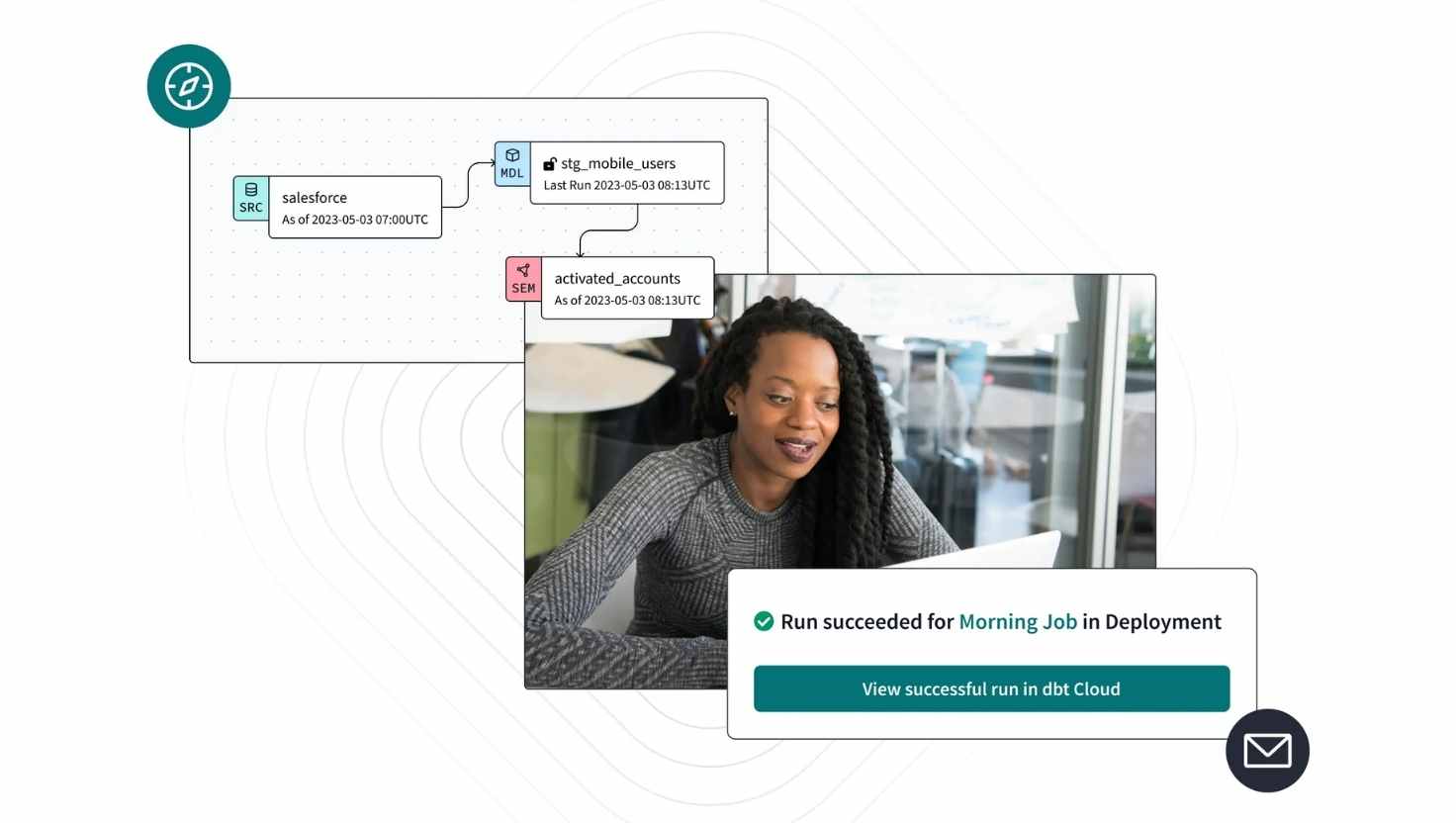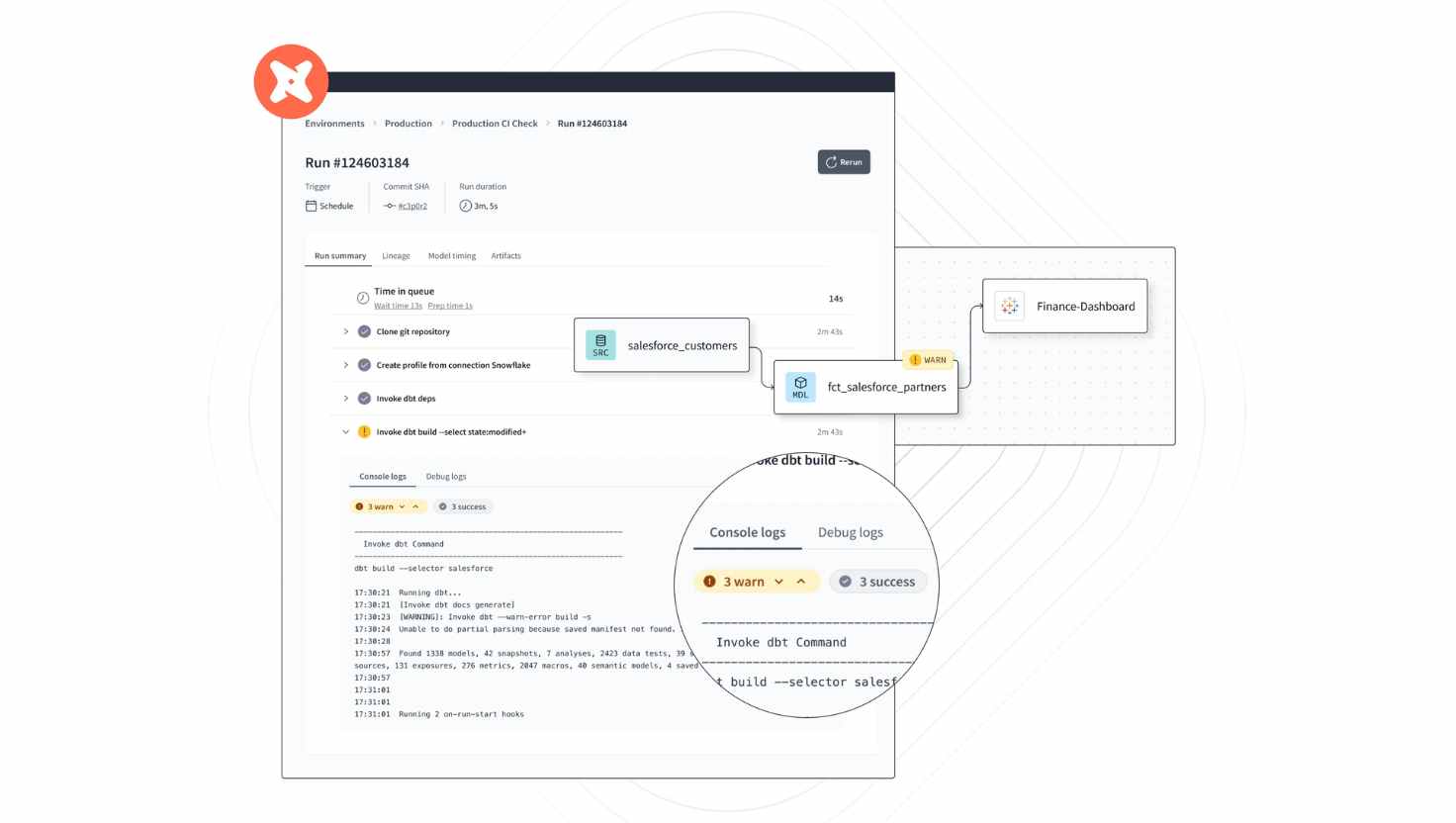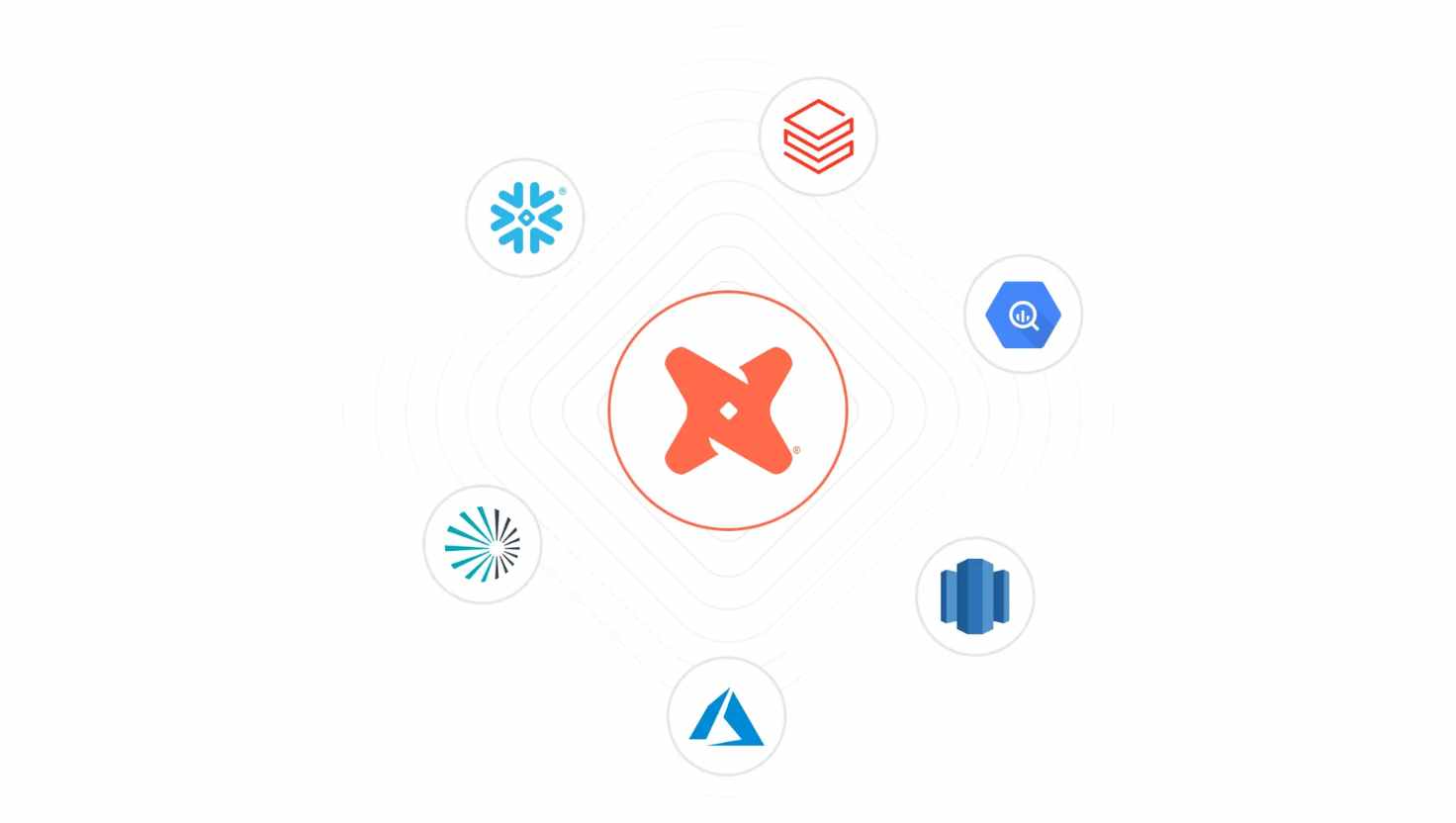dbt
Data runs on dbt. Power everything in your business with high-quality, trusted, and reliable data.

Less data work. More data that works.
Deliver data that business can trust – and trace
Reliable data increases trust and fuels wide-reaching business decisions. This saves time and resources and improves brand equity.
Build high-quality data products much faster
Provide stakeholders with timely deliverables and put an end to demoralising backlogs that burn out your data teams.
Increase your ROI with a modern data stack
Save costs by investing in the best tools and leading-edge strategies. When data teams prove ROI, they’re an asset instead of a liability.
Introducing the new standard in data development
Upgrade to a modern data development process that’s trusted by thousands of companies. dbt Cloud lets data teams reduce costs, ship data product faster, and build trust — for top-tier data development.

Step one
Quickly connect to your data cloud platform
Easily connect your data directly to dbt Cloud. dbt Cloud integrates with Snowflake, Databricks, BigQuery, and all other leading data cloud platforms.
Step two
Build high-quality data products with automated features
Start building right away. Features like pipeline break notifications, automatic documentation, and visible lineage help your team maintain data quality effortlessly.


Step three
Reuse what you’ve built and end time-wasting work
Save time and costs by allowing your team to re-use datasets, instead of rebuilding. Your team can leverage existing data to save time and increase productivity.
Step four
Scale with standardisation and top-tier governance
End silos by allowing data analysts and engineers to standardise on the same platform, with consistent metrics. Your data development stays protected with built-in guardrails like audit logs and fine-grained access control.

dbt Cloud makes data transformation easier, faster, and less expensive
Optimise the code, time, and resources that go into your data workflow with dbt Cloud. It’s a turnkey solution for data development with 24/7 support.
Trust your data and your data team
Be confident in the data your team delivers. dbt Cloud ensures that it’s trusted, accurate, and timely for your stakeholders.
Build reliable data products faster
Eliminate silos and bottlenecks with a collaborative workflow, self-serve analytics, and guardrails for fast and safe production.
Reduce the cost of producing insights
Refresh pipelines selectively, retire obsolete datasets, and optimise your data models to save costs.
dbt Resources
Have Questions? Reach out for a no-obligation chat.
"*" indicates required fields